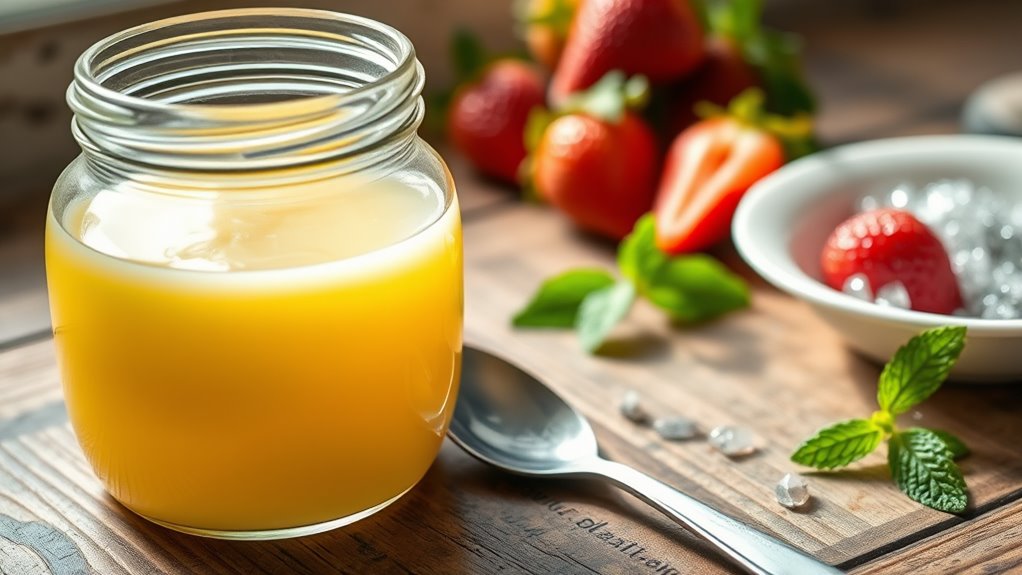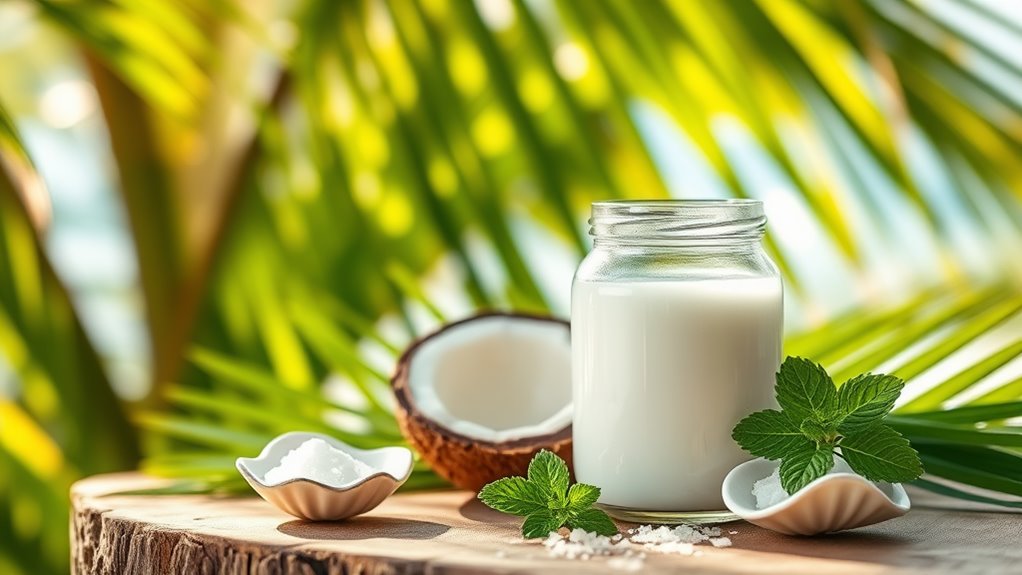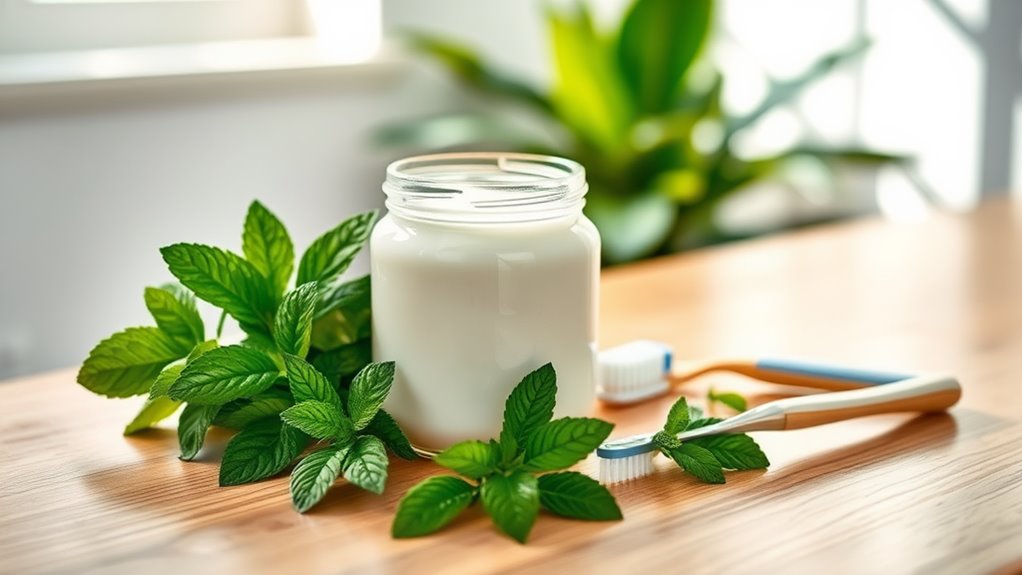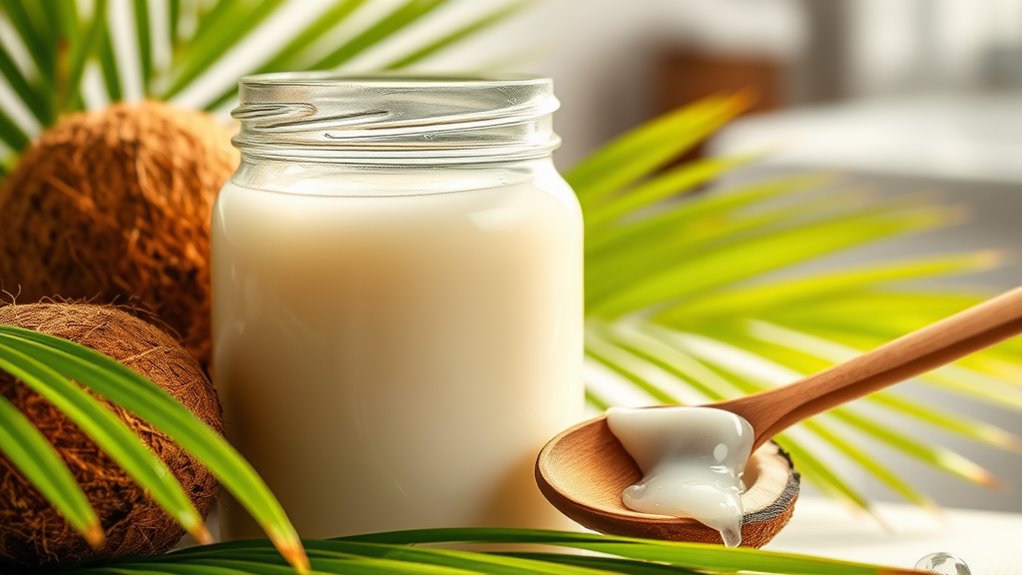I Tried Oil Pulling for a Week-Here’s What Happened
Did you know that nearly 60% of people are looking for natural ways to improve their oral health? Oil pulling, an ancient practice, has gained popularity for its potential benefits. You might be curious about how it actually works and what results you can expect. After trying oil pulling with coconut oil for a week, I experienced both challenges and surprising improvements. What happened during those seven days might just change your perspective on dental hygiene.
Key Takeaways
- After a week of oil pulling with coconut oil, users may notice whiter teeth and fresher breath due to bacteria elimination.
- Consistent practice can lead to improved gum health, including reduced inflammation and less bleeding during brushing.
- Some challenges include adjusting to the oil’s taste and texture, as well as managing jaw fatigue during the 15-20 minute swishing.
- The natural antimicrobial properties of coconut oil help combat harmful bacteria, enhancing overall oral hygiene.
- Despite initial difficulties, many users report significant improvements in oral health after just one week of practice.
What Is Oil Pulling?
Oil pulling is an ancient practice that involves swishing oil in your mouth to promote oral health. You might be surprised to learn that this technique dates back thousands of years, originating in Ayurvedic medicine.
By engaging in oil pulling with coconut oil, you can potentially reduce harmful bacteria, plaque, and bad breath. Coconut oil contains lauric acid, known for its antimicrobial properties, making it a popular choice among enthusiasts. Regular use can also lead to a healthier oral microbiome, which supports overall oral health. Additionally, oil pulling is believed to promote systemic wellness by enhancing the body’s natural detoxification processes.
To get started, simply take about a tablespoon of coconut oil and swish it around your mouth for 15-20 minutes. This process helps to pull toxins and bacteria from your mouth while also moisturizing your gums.
Regular practice could lead to a healthier smile and improved overall oral hygiene.
My Choice of Oil: Coconut Oil
When it comes to choosing an oil for pulling, coconut oil stands out as a top contender due to its unique properties. Not only does it have a pleasant taste, but it also offers several benefits that make it an ideal choice for your oil pulling routine.
Here are three reasons why you might lean toward coconut oil:
-
Antimicrobial properties: Coconut oil contains lauric acid, which can help combat harmful bacteria in your mouth.
-
Natural moisturizer: It keeps your mouth hydrated, preventing dryness during the pulling process. Additionally, using coconut oil can also promote oral health benefits beyond just oil pulling.
-
Easily accessible: Coconut oil is widely available in stores, making it a convenient option for your daily routine.
Additionally, coconut oil reduces plaque buildup, which further enhances your oral health.
With these advantages, coconut oil can enhance your oil pulling experience and contribute to better oral health.
Day 1: First Impressions
On Day 1 of your oil pulling journey, you’ll likely find yourself surprised by the unique texture and flavor of coconut oil in your mouth. As you swish it around, consider both the potential benefits for your oral health and any concerns that might arise. This first experience sets the stage for your ongoing exploration of this age-old practice. Many enthusiasts report that regular oil pulling can lead to fresher breath and a brighter smile over time. Additionally, the practice is believed to address various health concerns, making it a holistic wellness approach.
Initial Thoughts on Experience
As you commence your oil pulling journey, the first day can feel both intriguing and a bit odd. You might find yourself questioning the benefits versus the unusual practice.
Here are three initial thoughts to ponder:
-
Mindfulness: Oil pulling requires you to focus on the act, making it a great opportunity for mindfulness and self-care.
-
Routine Change: Incorporating this practice into your daily routine can feel disruptive, but it’s also a chance to build healthier habits.
-
Expectations: Setting realistic expectations is key; immediate results are unlikely, but consistent practice may yield benefits over time.
Flavor and Texture Analysis
Many first-time oil pullers are surprised by the flavor and texture of the oil, which can greatly influence the experience. You might expect the oil to be smooth and neutral, but the reality can be quite different.
Coconut oil is popular due to its mild sweetness, while sesame oil has a nuttier flavor. When you swish the oil in your mouth, you’ll notice its thick, viscous consistency, which can feel a bit strange at first. It coats your teeth and gums, making you conscious of the sensation.
The initial taste might be off-putting, but as you continue, you may find it becomes more tolerable. This unique combination of flavor and texture sets the stage for your oil pulling journey.
Anticipated Benefits and Concerns
While you might feel a mix of excitement and skepticism on your first day of oil pulling, understanding the anticipated benefits and concerns can help set realistic expectations.
Here are three key points to reflect upon:
-
Oral Health Improvement: Many proponents claim that oil pulling can reduce plaque and improve gum health, potentially leading to fresher breath.
-
Detoxification: Some believe that this practice helps detoxify the body by removing toxins from the mouth, although scientific evidence is limited.
-
Potential Side Effects: You might experience initial discomfort, such as jaw fatigue or an upset stomach, especially if you’re not used to swishing oil.
Keeping these factors in mind can help you navigate your oil pulling journey more effectively.
Daily Routine and Techniques
Incorporating oil pulling into your daily routine can be simple and rewarding, especially when you follow a few effective techniques. Start by choosing a high-quality oil, like coconut or sesame, and measure about one tablespoon.
First thing in the morning, before eating or drinking, swish the oil in your mouth for 15-20 minutes. Make sure to move it around to cover all areas, but avoid swallowing any—it’s full of toxins.
If you’re new to this, begin with just five minutes and gradually increase the time. Afterward, spit the oil into a trash can, not the sink, to prevent clogging.
Rinse your mouth thoroughly with water, and brush your teeth as usual for best results. Regular oil pulling with coconut oil may help reduce harmful bacteria and improve overall oral health.
Physical Changes Observed
Oil pulling can lead to noticeable physical changes that enhance both oral and overall health. After a week of consistent practice, you might observe the following:
-
Whiter Teeth: Many users report a brighter smile, as oil pulling can help remove surface stains and plaque.
-
Fresher Breath: You may notice a significant improvement in your breath, as the process helps eliminate bacteria that cause bad odors.
-
Reduced Inflammation: If you struggle with gum issues, you could experience less swelling and discomfort, leading to a healthier mouth overall.
Additionally, the natural antimicrobial properties of coconut oil break down bacterial cell walls, which further contributes to these benefits.
These changes not only boost your confidence but also encourage a more mindful approach to your oral hygiene routine. Embracing this practice can be a step toward better health.
Oral Health Benefits
You might be surprised to learn that oil pulling can actually enhance your oral health in several ways.
Many users report whiter teeth, improved gum health, and a noticeable reduction in bad breath.
These benefits stem from the natural antibacterial properties of the oils used, making it a simple yet effective addition to your dental routine. Additionally, oil pulling utilizes medium-chain fatty acids, which are particularly effective against harmful bacteria in the mouth.
Whiter Teeth Results
While many natural remedies promise a brighter smile, oil pulling stands out for its potential to enhance oral health and whiten teeth effectively. After a week of daily practice, you might notice some impressive results.
-
Stain Reduction: Oil pulling can help lift surface stains caused by coffee, tea, and other foods, making your teeth appear whiter.
-
Improved Luster: The antibacterial properties of the oil can lead to a shinier, healthier-looking smile.
-
Enhanced Overall Oral Hygiene****: By reducing plaque buildup, oil pulling indirectly contributes to a brighter smile.
Though results can vary, many users report noticeable whitening effects, making oil pulling a worthy addition to your oral care routine.
Keep in mind that consistency is key for achieving and maintaining those results!
Gum Health Improvement
Beyond achieving a whiter smile, oil pulling offers significant benefits for gum health. By swishing oil in your mouth, you can help reduce inflammation and promote overall gum health. Research shows that oil pulling may lower the plaque buildup, reducing the risk of gingivitis. You’ll likely notice less bleeding during brushing, which indicates healthier gums.
Here’s a quick overview of the benefits:
| Benefit | Description | Evidence |
|---|---|---|
| Reduces Inflammation | Oil pulling can soothe inflamed gums. | Studies show decreased swelling. |
| Lowers Plaque Buildup | Helps prevent the accumulation of plaque. | Clinical trials support this. |
| Enhances Gum Health | Promotes overall gum health and reduces bleeding. | Observational data indicates improvement. |
Incorporating oil pulling into your routine can be a simple step toward healthier gums.
Bad Breath Reduction
If you’re looking for a natural way to combat bad breath, oil pulling might be the solution you need. This ancient practice not only promotes oral health but also helps reduce unpleasant odors. Here’s how it works:
-
Bacteria Removal: Oil pulling helps eliminate harmful bacteria in your mouth, which are often responsible for bad breath.
-
Improved Saliva Production: Swishing oil stimulates saliva flow, aiding in neutralizing acids and washing away food particles that can cause odors.
-
Freshens Breath: Oils like coconut or sesame have antimicrobial properties that leave your mouth feeling fresh and clean.
After a week of oil pulling, you might notice a significant improvement in your breath, making it an easy addition to your oral hygiene routine.
Challenges Faced During the Week
During the week of oil pulling, you might encounter several challenges that test your commitment to the practice.
First, the initial taste and texture of the oil can be off-putting, making it hard to stick with it. You may also struggle with timing; dedicating 15-20 minutes daily can feel tedious, especially if you’re busy.
Additionally, you might experience minor jaw fatigue from swishing the oil for prolonged periods. Some people report a temporary increase in saliva production, which can be distracting.
Finally, you might find it difficult to maintain consistency, particularly if you forget or skip a session. Awareness of these challenges can help you prepare mentally and physically for a successful oil pulling experience.
Final Thoughts on Oil Pulling
As you wrap up your week of oil pulling, it’s essential to reflect on the benefits and challenges you’ve experienced.
While it may not replace your regular dental hygiene routine, you might find some positive effects. Here are three key takeaways:
-
Improved Oral Health: Many participants report reduced plaque and fresher breath, which can boost your confidence.
-
Detoxification: Some believe oil pulling helps remove toxins from the body, though scientific evidence is limited.
-
Consistency is Key: Like any health habit, sticking with it may yield better results over time.
Ultimately, oil pulling can be a supplementary practice to enhance your oral care.
Consider incorporating it into your routine if you enjoyed the experience and found benefits!




